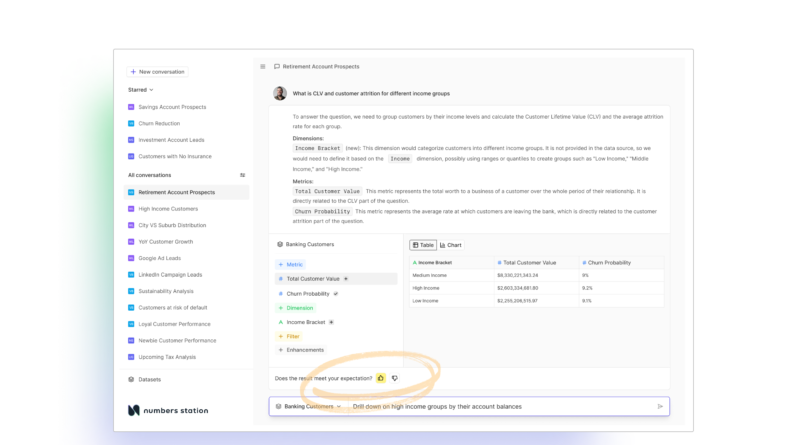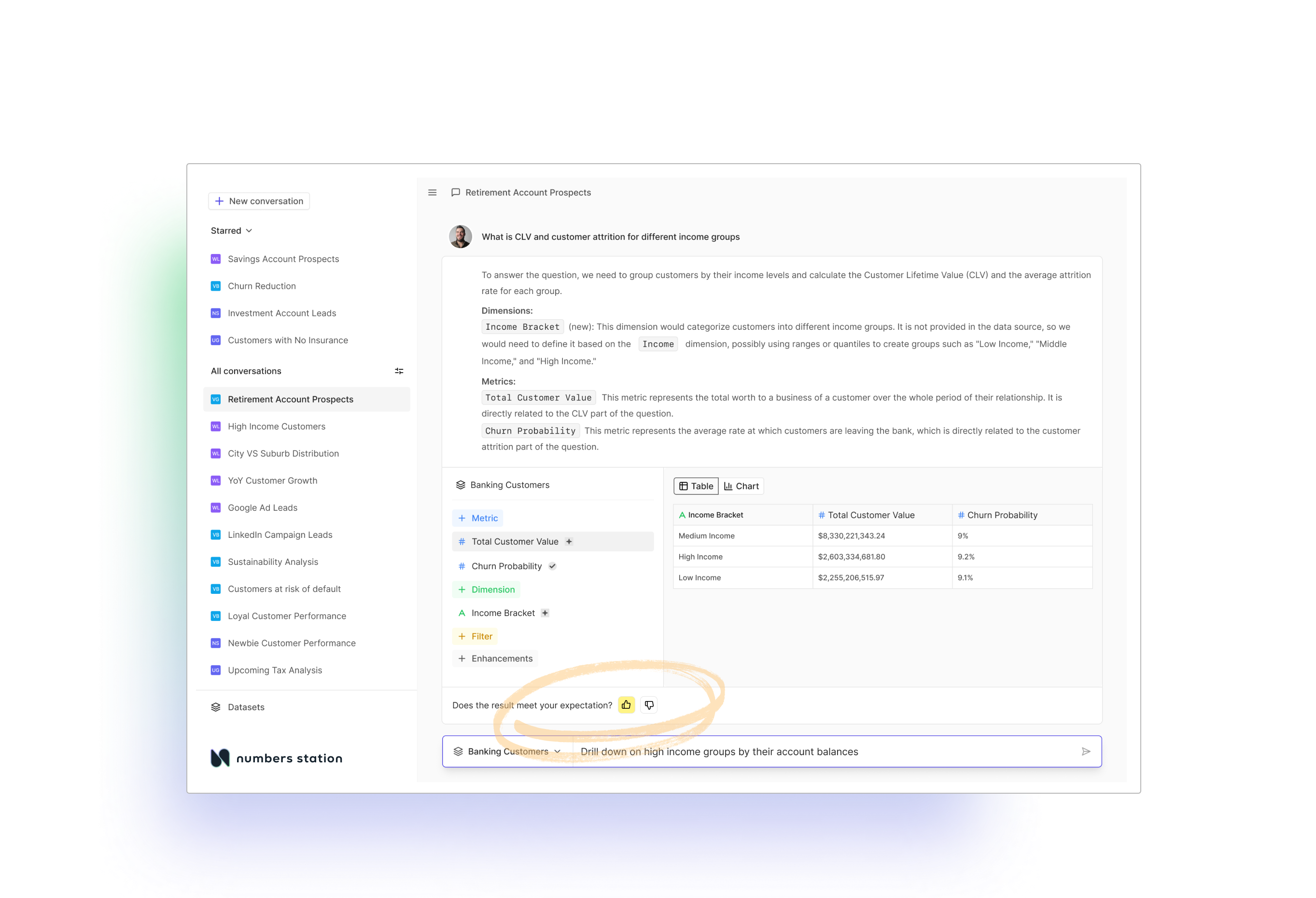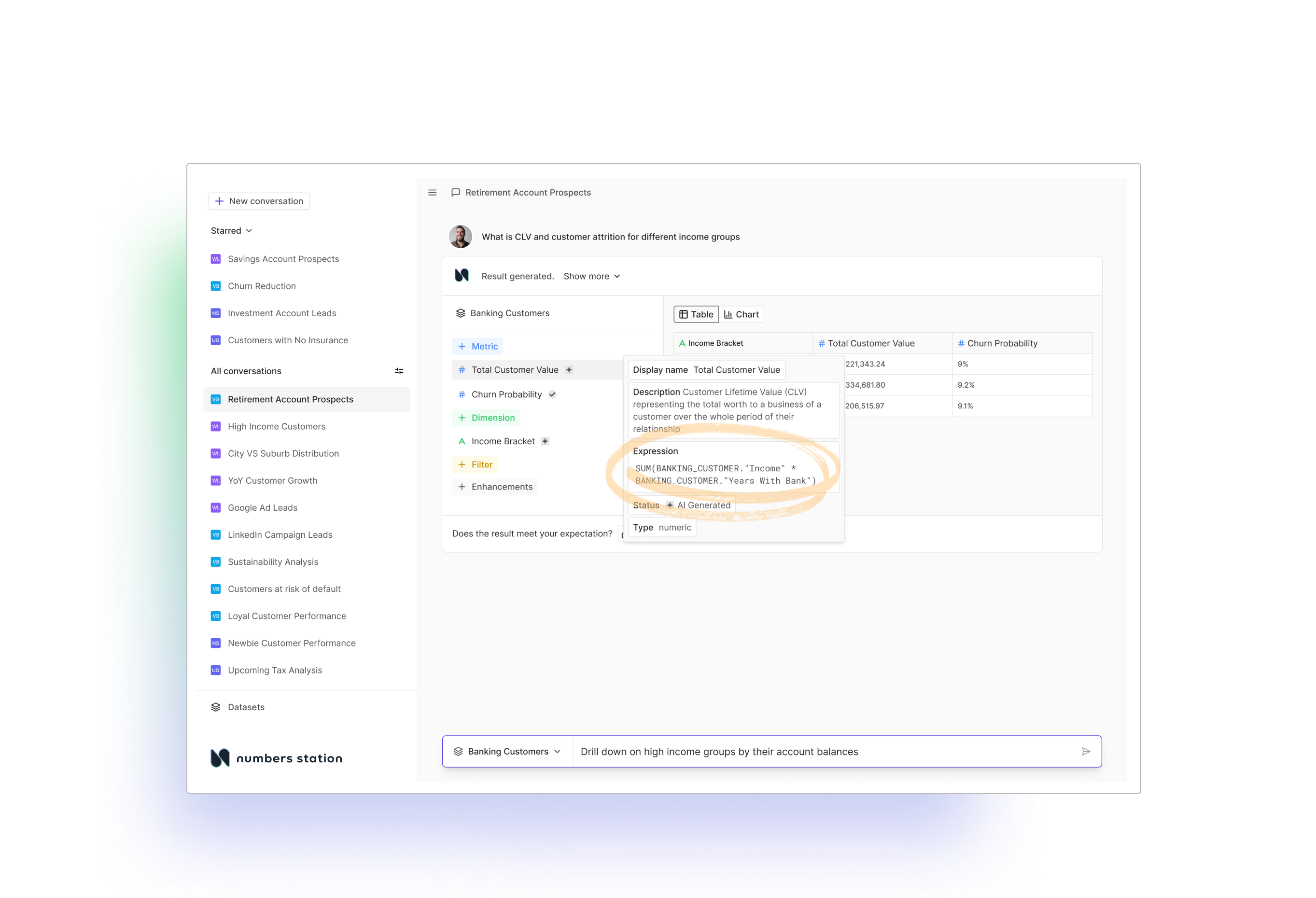Numbers Station lets business users chat with their data
Numbers Station, a startup that is using large language models (LLMs) to power its data analytics platform, is launching its first cloud-based product today: the aptly named Numbers Station Cloud, which is now in early access. With this service, virtually any user in an enterprise can analyze their internal data using Numbers Station’s chat interface.
Several similar tools focus on translating natural language queries into a database language like SQL. However, the Numbers Station team argues that this approach has limitations, in part because the generic LLM doesn’t have an understanding of how a given company operates, how it structures its data and how people inside the company refer to specific data objects.
As Numbers Station co-founder and CEO Chris Aberger told me, he’s somewhat tired of talking about how the service allows users to “chat with their data,” because there is so much noise around that. “But the higher level thing of business executives, non-technical users, having questions they want to ask, and then getting answers over these classic structured data sources, is really where things have led,” he told me. “There’s a lot of data modeling, data plumbing around these foundation models and large language models to make them work.”
For Numbers Station, this has meant spending a lot of engineering resources on building what the company calls its semantic catalog. That catalog is essentially an automatically curated source of a company’s metrics and definitions. That catalog is specific to every company (and not shared between them). Aberger described the catalog as “a beastly thing” that, for example, ensures that the model’s definition of “recurring revenue” is aligned with the company’s usage of that term.
While Numbers Station’s platform sits on top of a set of very specialized LLMs and machine learning models, it’s this catalog that holds everything together. As Numbers Station co-founder and chief scientist Ines Chami told me, the team had originally underestimated the challenge of building out that part of the platform.
“It goes back to classical [machine learning] and classical data engineering: How do I create a representation of knowledge that the model can actually use to answer those questions,” she told me. “Because there’s no way a model is going to understand all those metrics, all those things that business users ask about.” Even humans don’t understand every question immediately, after all, and the model has to turn those vague questions into very concrete queries. Numbers Stations’ research shows that its approach results in significantly improved precision compared to more traditional text-to-SQL pipelines.
While the company is launching this chat service today, the overall vision is significantly larger.
“What we’re doing, fundamentally, is building an AI platform for analytics,” Aberger said. “This is one of the applications […]. There’s a bigger, broader play that we’re still working on as a company, which is going after a bunch of different data problems that sit on top of here, examples of which are: How do I enrich my data with third-party data sources? How do I do some of these more classic algorithms like fuzzy matching, etc.? There’s almost an infinite number of spokes that you can build off of on this platform.”
The company has already signed up several Fortune 500 customers, including the likes of global real estate services firm Jones Lang LaSalle. “Numbers Station is at the cutting edge of enterprise AI for structured data,” said Sharad Rastogi, the CEO of Work Dynamics Technology from Jones Lang LaSalle. “We are impressed by Numbers Station’s trusted and engaging platform. It continuously learns as we use it, enabling our data teams discover and verify hypotheses for driving impactful business outcomes.”






